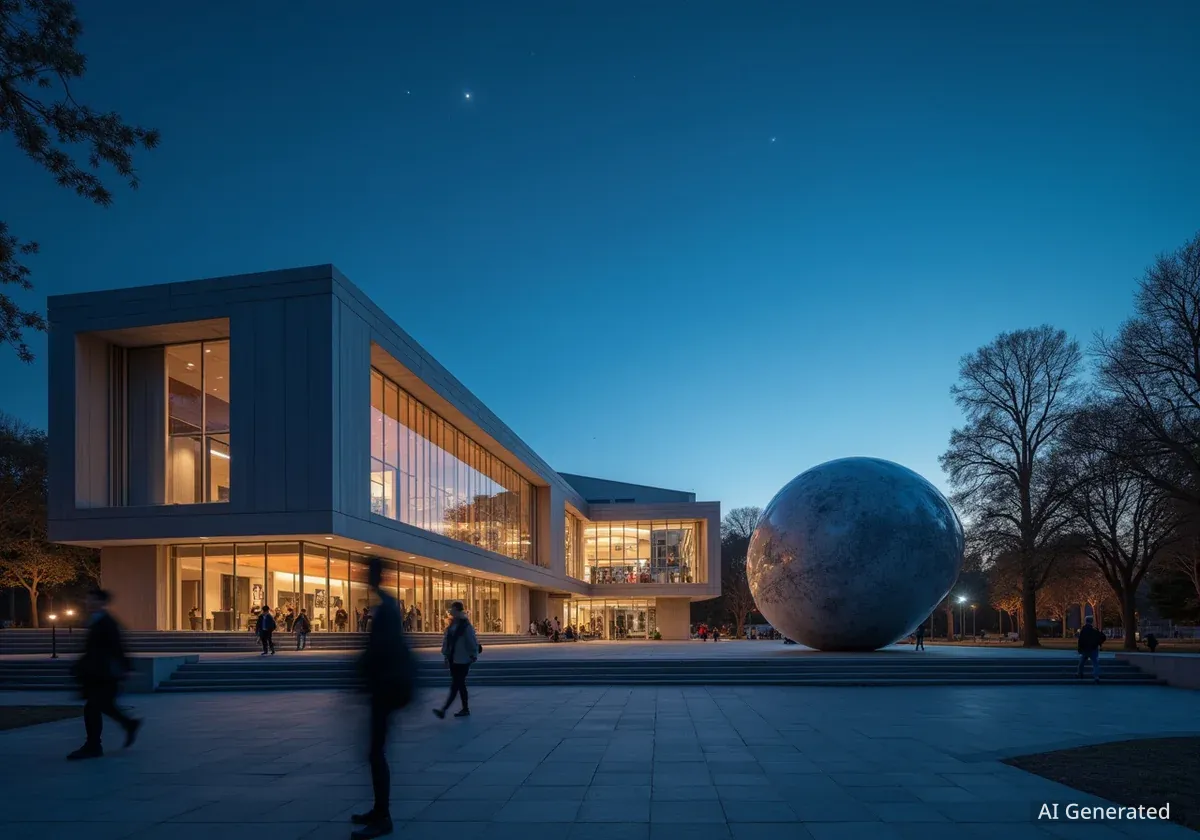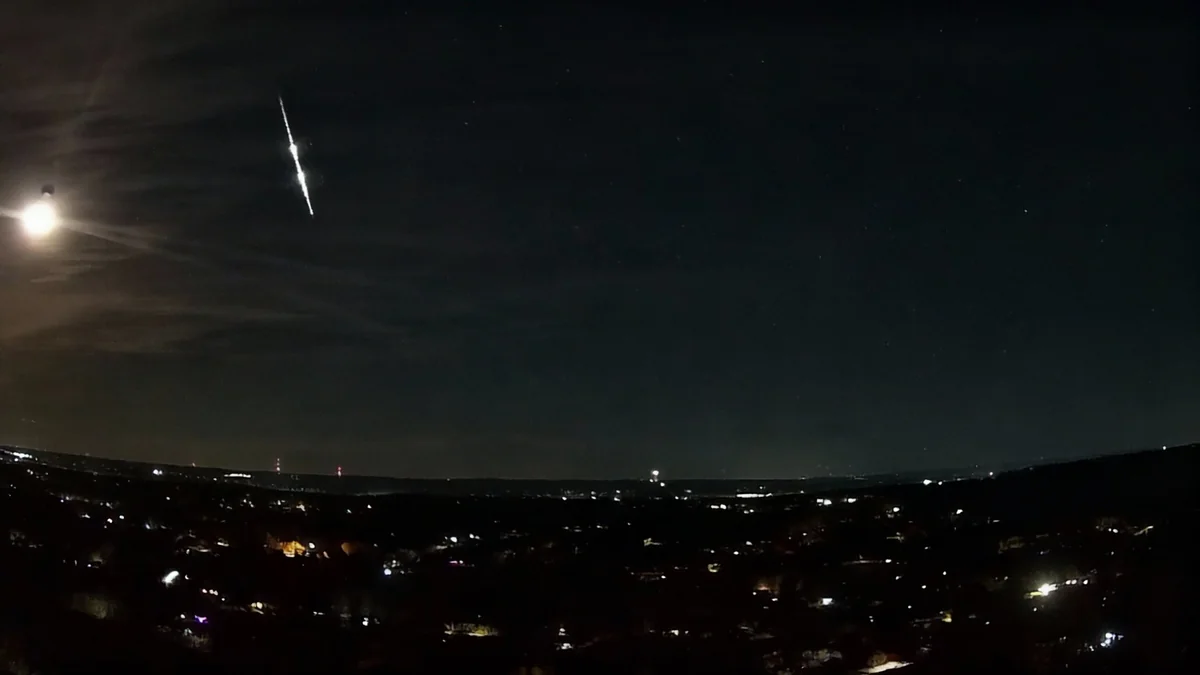The University of California San Diego has established itself as a significant contributor to space science, with its alumni serving as astronauts and its researchers leading studies on human health in orbit and the fundamental properties of the universe. These efforts, often supported by federal funding, extend from the International Space Station to distant star systems.
As part of a global focus on science and technology, the university's wide-ranging projects highlight its role in advancing human knowledge. These initiatives include analyzing the effects of spaceflight on the human body, discovering new celestial objects, and developing technologies for future missions.
Key Takeaways
- UC San Diego alumni have achieved major milestones in space, including the first DNA sequencing in orbit and participation in the first all-woman spacewalk.
- University researchers led key parts of NASA's Twin Study, providing deep insights into how long-duration spaceflight affects human biology.
- Scientific contributions include characterizing exoplanet systems like TRAPPIST-1, investigating water sources on the Moon and Mars, and studying the origins of the universe.
- Current projects involve developing new satellite missions to monitor Earth and using microgravity to research cancer treatments and combustion.
UC San Diego Alumni in Human Spaceflight
Graduates from UC San Diego have been involved in several historic space missions. Their work aboard the International Space Station (ISS) and on other spacecraft has pushed the boundaries of scientific research in orbit.
Notable Astronaut Achievements
Several alumni have made significant contributions as NASA astronauts. Kate Rubins, a 1999 graduate, became the first person to sequence DNA in space in 2016. This experiment demonstrated that genetic analysis is feasible in a microgravity environment, opening new possibilities for in-flight medical diagnostics.
In 2019, Jessica Meir, who earned her PhD from the institution in 2009, took part in NASA's first all-female spacewalk. This event was a major milestone for the space agency. Two years later, Megan McArthur, a 2002 PhD graduate, piloted a SpaceX Crew Dragon mission to the ISS, marking her as the first woman to do so.
Most recently, Deniz Burnham, from the class of 2007, graduated from NASA's two-year astronaut training program. She is now eligible for future missions that could include assignments to the space station, the Moon, or Mars.
Advancing Human Health Research for Space
UC San Diego's medical and scientific departments are deeply involved in understanding how the human body reacts to the harsh conditions of space. This research is critical for planning long-duration missions and ensuring astronaut well-being.
The NASA Twin Study
One of the most prominent studies involved astronaut Scott Kelly, who spent nearly a year in space, and his identical twin brother, Mark, who remained on Earth. Researchers from UC San Diego School of Medicine played a leading role in analyzing the biological differences between the brothers. The study examined their genes, immune systems, and cognitive functions, providing an unprecedented look at the molecular-level changes caused by extended spaceflight.
The findings from the Twin Study are now helping NASA prepare for future missions to the Moon and Mars by identifying the key health challenges astronauts will face.
Stem Cells and Aging in Microgravity
Building on this work, the Sanford Stem Cell Institute at UC San Diego sent blood-forming stem cells to the ISS. The experiment aimed to observe how these cells change in microgravity. Results showed that the cells exhibited signs of accelerated aging within weeks. However, some of this damage was reversed after they returned to Earth.
"Such evidence gives scientists new clues about how spaceflight affects astronauts’ health and how studying the body in orbit can teach us more about aging on Earth," noted the research team.
This study suggests that cellular aging might be partially reversible, offering insights for both astronaut health and age-related conditions on our planet.
AI-Powered Vision Protection
Vision loss is a known risk for astronauts. Researchers from the Shiley Eye Institute and other UC San Diego departments developed an artificial intelligence tool to predict which astronauts are most susceptible. By analyzing detailed eye scans using the San Diego Supercomputer Center's Expanse system, the AI can identify individuals at high risk before they launch, allowing for preventative measures.
Exploring the Solar System and Beyond
Scientists at UC San Diego are also focused on understanding the cosmos, from nearby celestial bodies to distant galaxies. Their work contributes to some of the most significant planetary discoveries of recent years.
Characterizing Distant Worlds
In 2017, astronomers discovered TRAPPIST-1, a star system with seven Earth-sized planets. UC San Diego astrophysicists were instrumental in characterizing the central star. They measured its temperature, gravity, and magnetic activity to help determine if its planets could potentially support life. This work provided essential context for a major exoplanet discovery.
The Search for Water in Space
Finding water is crucial for future long-term space missions. UC San Diego has a long history in this area, dating back to the Apollo 11 mission when its professors were among the first to study lunar samples.
- Lunar Water: A recent study by atmospheric chemist Mark Thiemens concluded that most water on the Moon likely originated from the Moon itself or from comet impacts, rather than from solar winds as previously thought.
- Martian Water: At Scripps Institution of Oceanography, geophysicist Vashan Wright analyzed data from NASA's InSight lander. A 2024 study he co-authored suggests that liquid water may be stored deep beneath the Martian surface.
These findings help guide NASA's Artemis program and future missions by identifying potential resource locations.
Innovative Experiments in Orbit
The unique microgravity environment of the ISS provides a laboratory for experiments that are difficult or impossible to conduct on Earth. UC San Diego researchers are leveraging this platform for groundbreaking studies.
Cancer Research in Microgravity
As part of Axiom Mission 2, scientists from the Sanford Stem Cell Institute sent tumor models into space. The goal was to study how cancer cells react to treatments in microgravity, where some cellular changes and drug resistance can develop more quickly. By observing these accelerated processes, researchers hope to discover new treatment strategies for patients on Earth.
Studying 'Cool Flames'
In a long-running collaboration with NASA, university-led researchers ignited fuel droplets on the ISS. They observed a type of low-temperature, invisible flame known as a "cool flame." Studying this unique form of combustion provides new data on chemical reactions that could lead to the development of cleaner and more efficient engines on Earth.
Legacy and Future Vision
UC San Diego's contributions are built on a strong legacy and are poised to continue with ambitious new projects and leadership.
The late Sally Ride, the first American woman in space, joined the university's physics faculty in 1989. Her legacy lives on through the Sally Ride Science Academy, which inspires students in science and engineering, and the Research Vessel Sally Ride, operated by Scripps Oceanography.
New Satellite Missions
Looking ahead, two UC San Diego-led teams are finalists in a NASA program to develop new Earth-observing satellite missions. Each team received $5 million for concept development.
- A team led by glaciologist Helen Amanda Fricker is designing a satellite to create 3D maps of changes in glaciers, ice sheets, and forests.
- Another team, led by oceanographer Sarah Gille, is developing a satellite to measure global winds and ocean currents.
If selected, these missions would receive over $300 million each, providing powerful new tools for monitoring our planet's changing systems.





